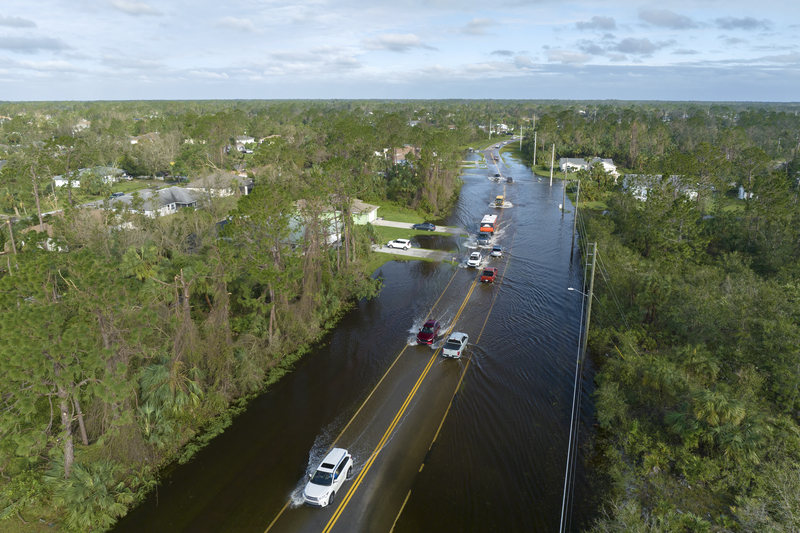
September and October’s storms left a trail of destruction across half a dozen US states, with hundreds of people dead. It comes after a series of extreme weather events – primarily involving heat, fires and flooding – which have bedevilled North America in recent years.
These incidents – with often dreadful consequences for life and property – are a stark reminder of why the US Department of Transportation (USDoT) is increasingly emphasising the importance of resilient, sustainable and accessible transportation systems in its work.
The organisation says it has been “working to integrate consideration of climate resilience and risk across transportation decision-making and to ensure that transportation investments incorporate evidence-based climate resilience measures or features”. It is already sponsoring the Center for Emissions Reduction, Resiliency and Climate Equity in Transportation, announced earlier this year, which will be led by Rutgers University Center for Advanced Infrastructure and Transportation.
The Bipartisan Infrastructure Law has certainly allowed more money to be funnelled into projects which aim to mitigate the effects of climate change on US infrastructure.
Promoting resilience
In April this year, USDoT awarded nearly $830m in grants through the Promoting Resilient Operations for Transformative, Efficient and Cost-saving Transportation (Protect) discretionary grant programme to state and local governments, Tribal Nations, and US territories. These were additional to the $7.3 billion in formula funding that goes directly to states to support transportation system resilience to climate impacts, including flooding, sea-level rise, wildfires and extreme heat.
And USDoT’s Climate Adaptation Plan 2024-27, released in June, points out that USDoT’s interest in this is not new: the department’s Center for Climate Change and Environmental Forecasting (DoT Climate Change Center) was established in 1999, and the Federal Highways Administration started to issue reports on the potential impacts of climate change on transportation as early as 2002.
“More frequent and severe weather events year-round have lasting impacts on critical supply chains and Americans’ ability to safely travel,” USDoT says in a statement.In the same breath, it highlights that the transportation sector is “responsible for more carbon pollution than any other sector of the US economy”.
This is quite a circle that needs squaring. Investment in ‘clean transit’ is one of the categories which come under the Biden-Harris administration’s Justice40 initiative. For the first time in US history, Justice40 makes it a goal that 40% of the “overall benefits of certain Federal climate, clean energy, affordable and sustainable housing, and other investments flow to disadvantaged communities that are marginalised by underinvestment and overburdened by pollution”.
Building and expanding transportation systems “that reduce greenhouse gas emissions, are resilient to the impacts of climate change, and advance climate and environmental justice priorities” is one stated goal of the government. But to say the problem is complex would be a vast understatement.
-----------------------------------------------------------------------------------------------------------------------
Climate and transportation
In summer, USDoT hosted a Climate and Transportation Symposium, bringing together climate champions from cities, states, and communities across the country to showcase climate solutions. It highlighted how USDoT and stakeholders are implementing the US National Blueprint for Transportation Decarbonization, including creating more accessible and affordable mobility options.USDoT is also implementing the new $6.4 billion Carbon Reduction Formula Program, established by the Bipartisan Infrastructure Law. Funding goes to projects which aim to reduce carbon emissions, including complete streets programmes, public transportation, and traffic management.
What is USDoT’s Climate Adaptation Plan 2024-27?
The plan’s four priorities point to the way that transportation is bound up with environmental considerations:
1. Support investments in climate-smart infrastructure across all transportation modes with continued guidance, technical assistance, and decision support tools.
2. Expand coordination between climate resilience and environmental justice activities through grant programs and technical assistance.
3. Leverage federal climate data services to provide decision support resources for climate resilience and adaptation activities to DOT stakeholders.
4. Implement projects to reduce climate impacts on federal property, operations, and supply chains identified through ongoing natural hazard risk assessments.













